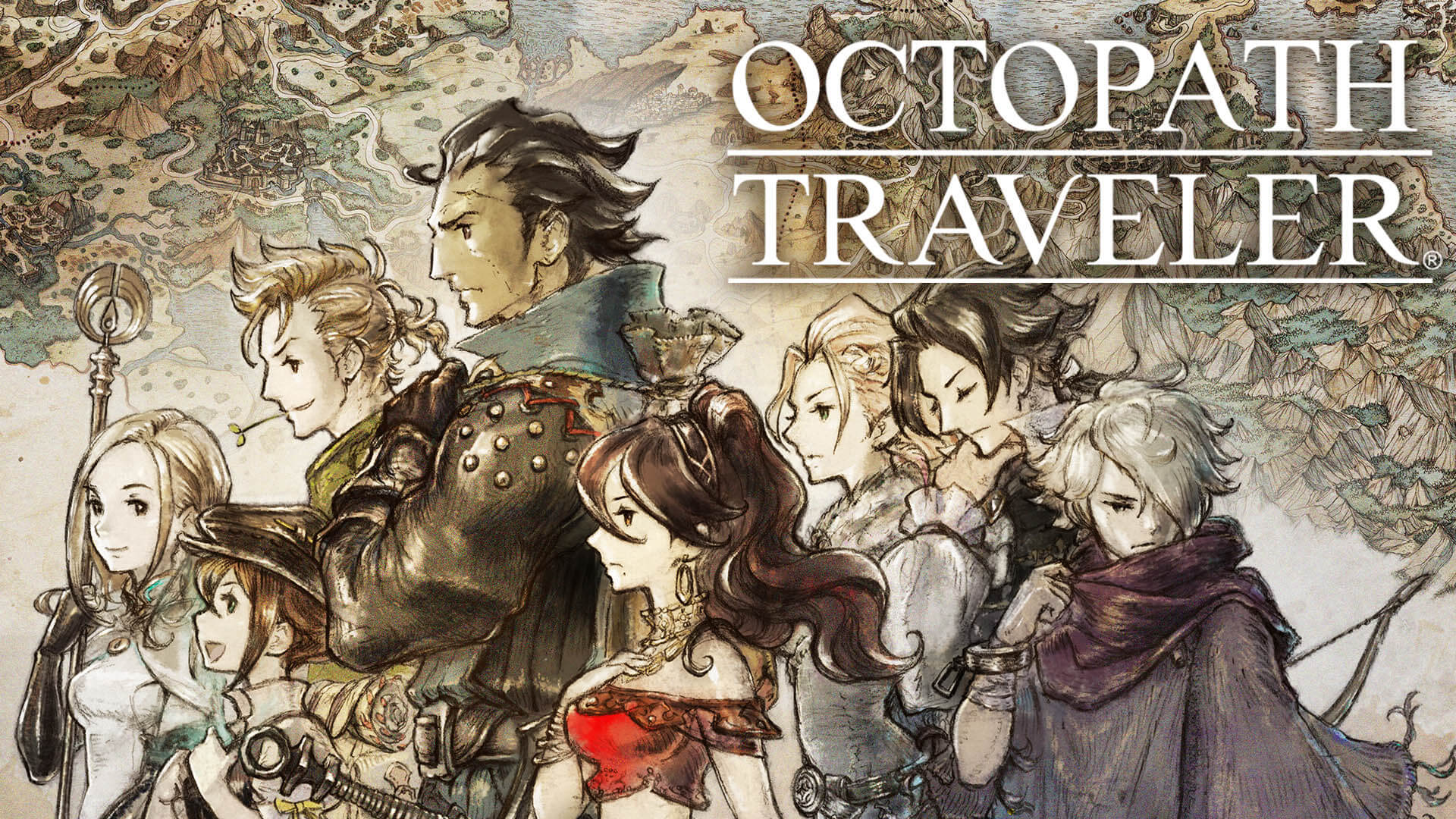What if I told you that there are exactly eight reasons to play Octopath Traveler – would you believe me? It seems only fitting for a game where everything revolves around the number eight. Eight stories, eight characters, eight chapters by four… Okay, that one doesn’t work, but the fact remains that Octopath is obsessed with the number – so this review too will be obsessed with it.
Story
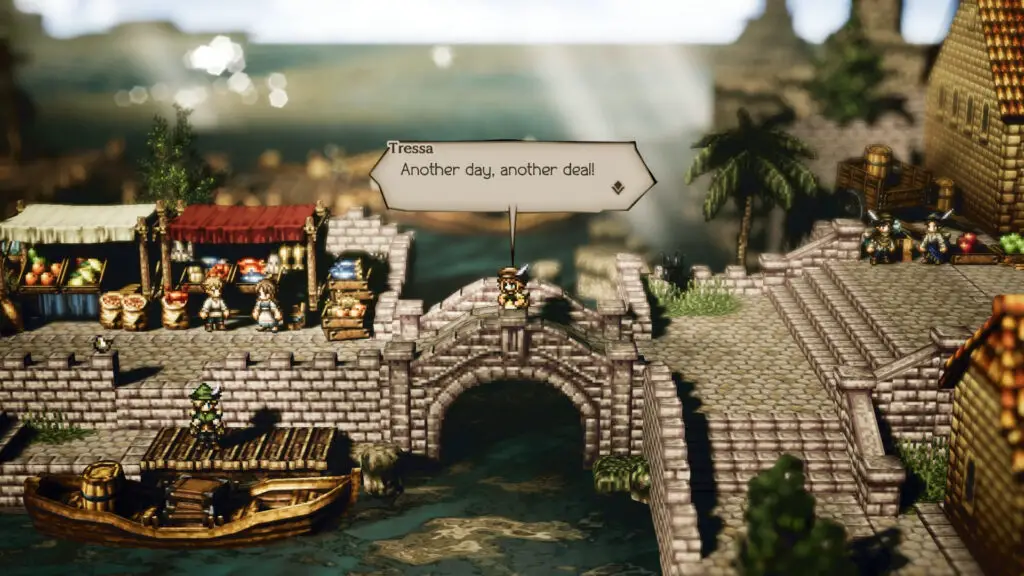
What attracts many gamers to an RPG is an epic story, and Octopath does not disappoint in the that department. There isn’t just one great tale to enjoy, but eight – each with a different character. While none of these stories are of epic proportions, their number definitely makes up for this. The downside is that they don’t intertwine. There is some connection between them, but even that only becomes apparent when all of them are completed.
Characters
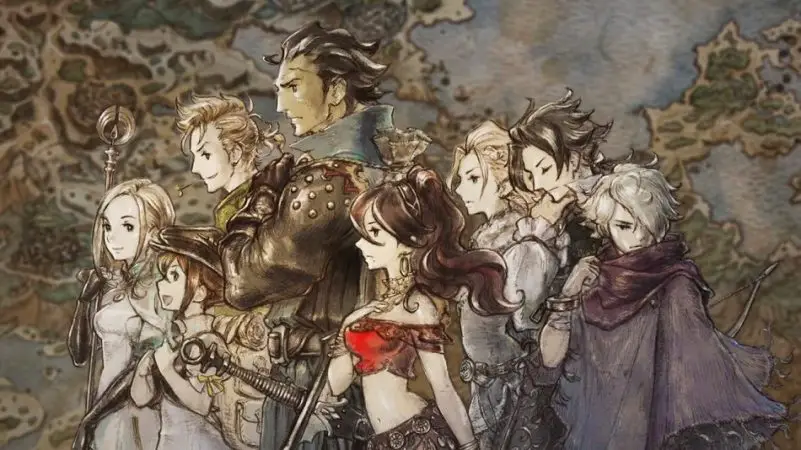
There are, of course, eight characters, and like with the story, this has both advantages and disadvantages. Overall, each hero plays differently and has unique abilities. The problem is that the characters don’t really interact with each other, except that they all ally with the protagonist. If you are the type of RPG player who loves seeing party members joke and banter, you’ll be disappointed. While they join the group together, they still seem alone at the end of their chapters.
Path Actions
Path actions are special abilities characters can use when not in combat. While not the most groundbreaking feature, these do change the gameplay depending on who’s in the party. Some allow characters to battle villagers for XP, recruit those for battle, or get exclusive items. While some of them I used way more than others – especially those that affected combat – I did appreciate that they were there. The downside is there are technically only four path actions, as the other four are similar, just with different names. Like, Allure and Guide are the same except used by two different characters.
Skills
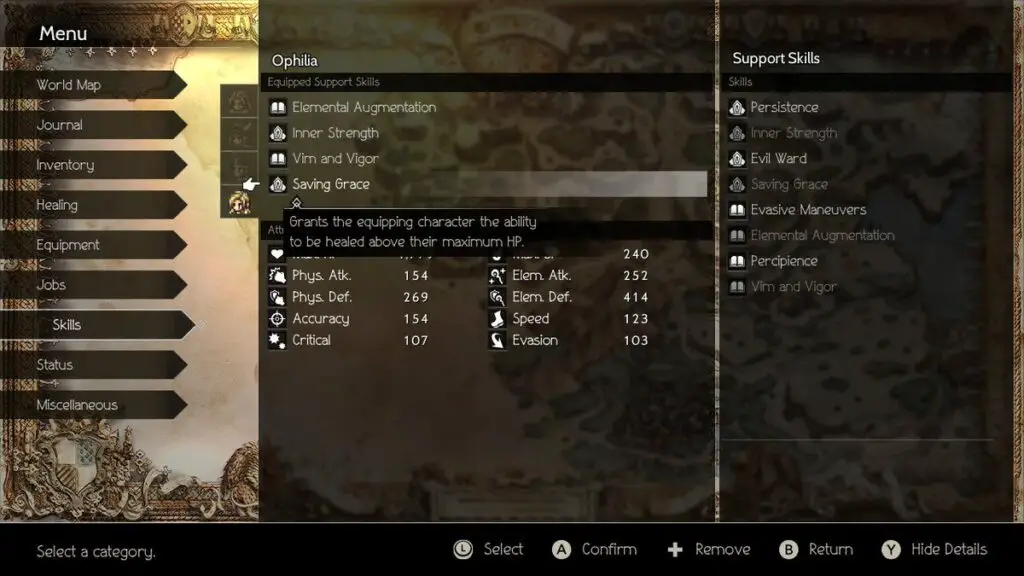
I really like how Octopath has handled skills. Instead of just unlocking new ones every level up, it gives the power to the player. After each battle, characters earn JP, which is then used to unlock skills. What makes the system unique is that JP doesn’t get depleted – though characters do have to reach certain milestones. The first skill unlock is at 30, the second is at 100, and that number keeps growing. In addition, characters can unlock and equip passive skills, with more additional ones depending on the secondary job.
Combat
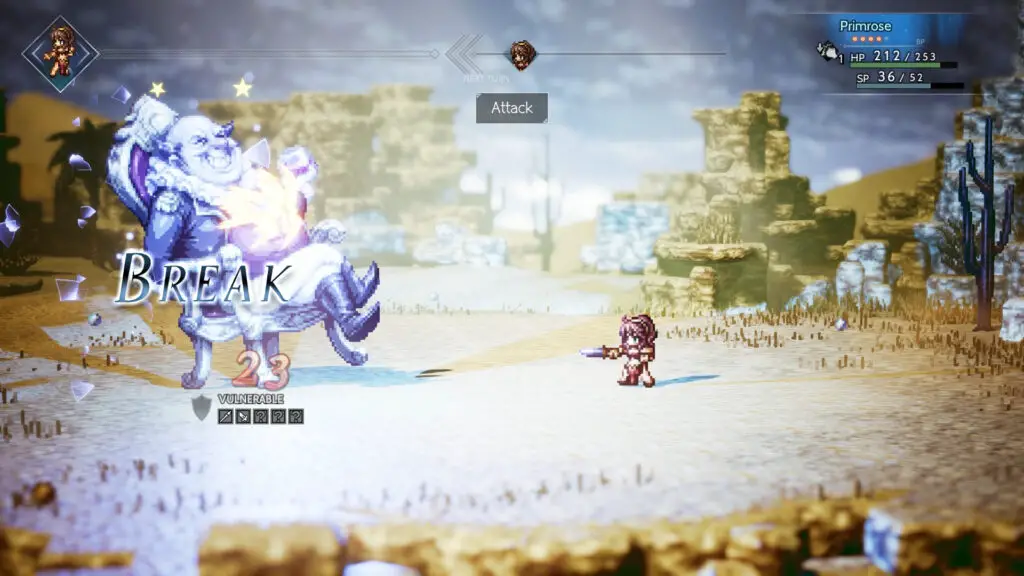
The combat is some of the most fun I’ve had with a turn-based RPG. It is both strategic and exciting. Anyone who plays such games knows that if combat is too easy, it gets boring – and if too complicated, most players switch off. It needs balance, and the battles here perfectly maintain it. Overall, it’s traditional style, reminding of Square and Enix legacy titles – before they became one. Not all of it is old-school; some elements add newer mechanics, like the break system. It allows dazing enemies for a turn by exploiting their weaknesses – making them take extra damage.
Boost Points
I know this is technically a part of combat, but it deserves a mention. The boosting system is a game changer. Without it, combat would be just good. With proper boosting, it becomes amazing. Both skills and attacks can be upgraded with Boost Points. Each character starts an encounter with one, and they’ll keep earning more each turn these aren’t used, up to a max of five.
When a character uses a Boost Point, it strengthens their skills’ effects. The maximum strength is four times greater than the base one, requiring a use of three Boost Points. This can result in repeating a normal attack four times, healing four times as much health, or dealing four times the normal damage. Combine this with a dazed enemy, and the number increases again – and again if they are weak towards that element. This considerably improves some attacks – which is exactly why I called it a Game Changer.
Old-School Love Letter
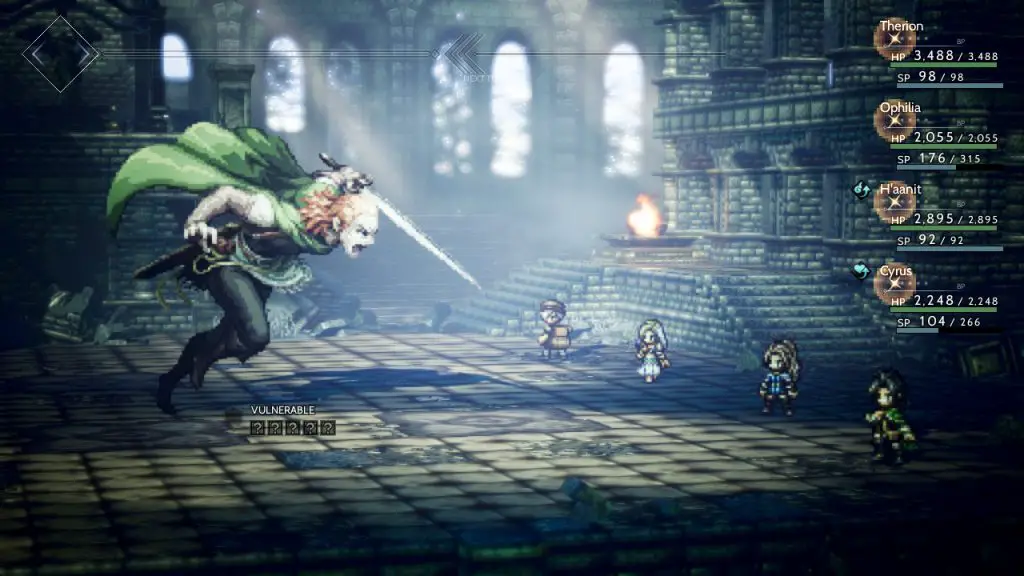
Anyone who’s read anything about Octopath Traveler knows that one of its main draws is the old-school RPG’s influence. The game is heavily inspired by the old stuff, though it does add something new to it, with its graphics, its gameplay and even its story. The traditional aesthetics do give it some character, but there is one negative to this. Okay, maybe more, but this one I really hate; it’s leveling – or the lack of it. Having played many RPGs, the one thing I hated about a lot of older ones was characters not levelling up if they aren’t in the party. Regrettably, Octopath doesn’t just inherit this feature – but intensifies it.
Intensifies it? Yes, you’ve read that right. Octopath doesn’t just have idle, or yet-to-be-recruited characters not level up. Mind you, every time your protagonist does so, the minimum level required to tackle the next character’s first chapter increases. In other words, enemies become stronger, fights – more difficult, but the hero whose chapter I was doing is at level one. I understand it’s inspired by the classics; the problem is I had no reason to use anyone beyond the fourth character. I’d have to constantly be changing them to do their chapters and end up being stuck with my first three heroes – who became powerhouses. In addition, while it was quicker to level them up with stronger enemies, they would also die a lot and get no experience; another annoying aspect.
H’aanit
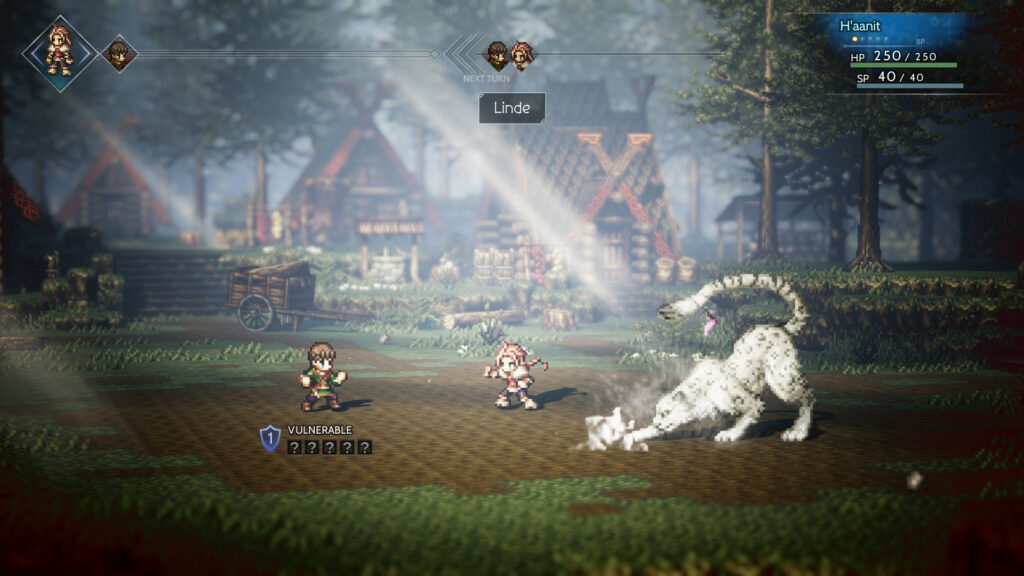
I know what you’re thinking – but, she was by far the best and the most special character in the game. Does that mean she can be considered one of the reasons to play Octopath Traveler? I say yes. Most other characters, while great, are the standard RPG fare. We have a scholar/mage, a priestess/healer, a thief, a merchant, a knight, and a dancer; H’annit is different. She’s a beastmaster, and she alone adds an entirely new aspect to the game: summoning and catching monsters in battle. Unlike Primrose and Ophilia, who can recruit one villager at a time, H’aanit has one monster that never leaves – and can catch another five or six. Those she can use a number of times before they are gone. Best character in the game.
Conclusion
I enjoyed my time with Octopath Traveler. It’s not a perfect game, but as a classic RPG fan, I found a lot to appreciate in it. I know this isn’t a traditional review format – but I do hope that these eight reasons can convince anyone who’s interested in Octopath Traveler to want to try it for themselves.

